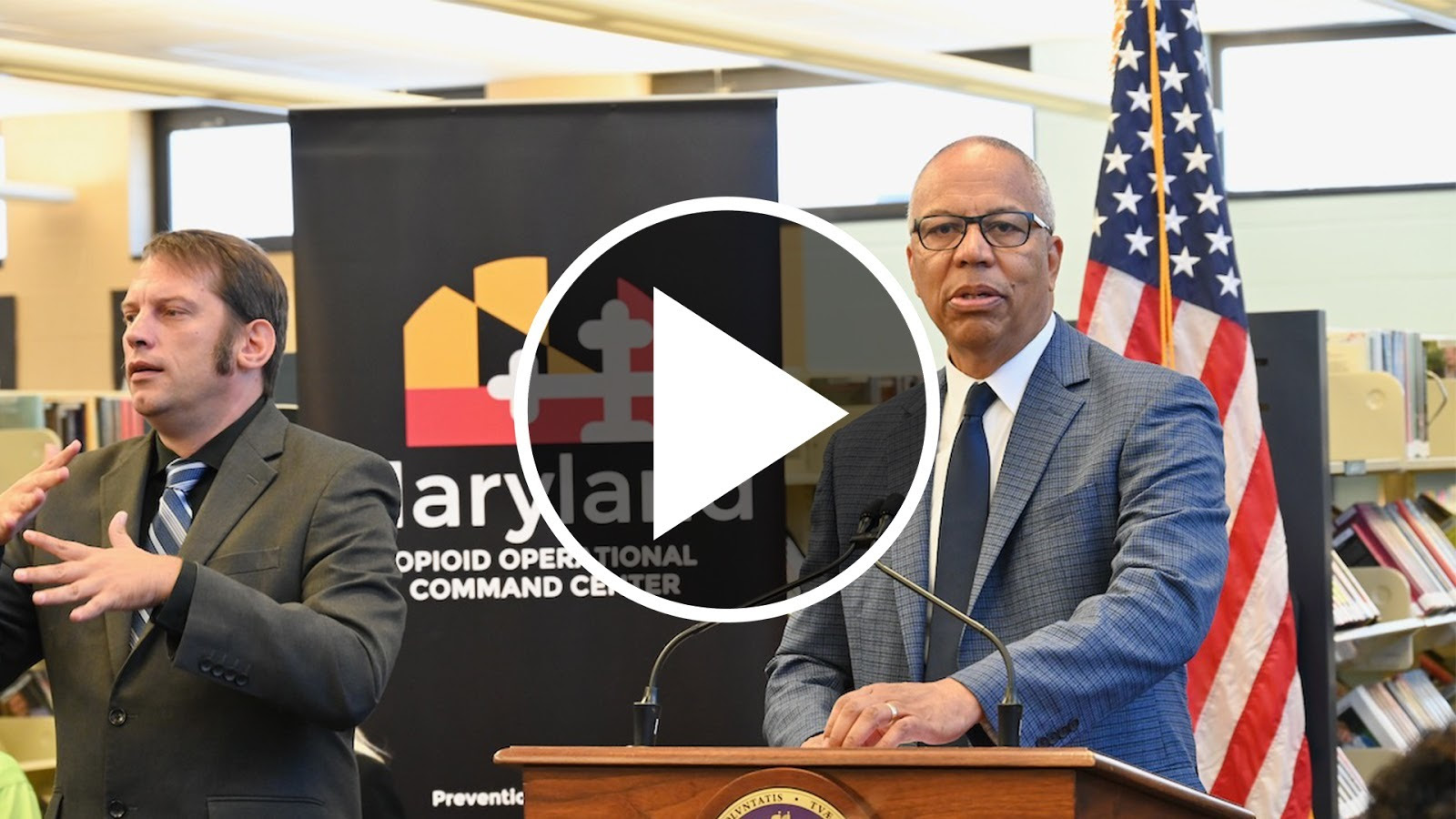Lt. Governor Rutherford Announces Launch of Statewide Maryland Stop Overdose Strategy
Comprehensive Strategy Includes Initiatives and Grants to Reverse Increase in Overdoses Experienced During COVID-19 Pandemic
ANNAPOLIS, MD—Lt. Governor Boyd K. Rutherford today announced the launch of the Maryland Stop Overdose Strategy (Maryland SOS), a multifaceted, interdisciplinary campaign to reduce overdose deaths of individuals experiencing substance use disorders. The announcement comes as the Opioid Operational Command Center (OOCC) and Maryland Department of Health (MDH) release a report showing a 5.7% increase in overdose deaths involving drugs and alcohol between January and March 2021 compared with the same period in 2020.

Watch today’s announcement.
“Seeing an increase in overdoses and deaths in our state is alarming, but we are determined to recover from this, as well as other impacts of the pandemic,” said Lt. Governor Rutherford. “As the opioid crisis evolves, so must our response. Our administration remains committed to putting the resources and support systems in place at every level to help those struggling with substance use disorders. The Maryland Stop Overdose Strategy is a new layer to our comprehensive statewide response, and we intend to do all we can to reduce opioid overdoses and deaths in our state.”
Lt. Governor Rutherford was joined for today’s announcement in Essex by Baltimore County Executive Johnny Olszewski, OOCC Executive Director Robin Rickard, Dr. Aliya Jones, MDH Deputy Secretary of Behavioral Health, Dr. Noel Braithwaite, MDH Director of the Office of Minority Health and Health Disparities, and Hillu Beyene, a peer recovery specialist supervisor in Baltimore County.
The Maryland SOS campaign includes $4 million in block grants awarded to the 24 jurisdictions in Maryland during Fiscal Year 2022, to support local prevention, enforcement, and treatment initiatives, as directed by local Opioid Intervention Teams (OIT) in each of Maryland’s 24 local jurisdictions across the state. Each OIT determines how to allocate funding based on local needs in combating opioid and substance misuse, as well as goals outlined in Maryland’s Inter-Agency Heroin and Opioid Coordination Plan.
Beginning in August, state and local leaders will host a series of town halls for Marylanders to speak about how they are affected by the opioid crisis. These regional events will be held in jurisdictions experiencing the greatest increase in opioid-related overdoses and deaths. The information gathered during those town halls will help identify gaps in resources and guide funding decisions for expanding services. Funding for new initiatives will come from the Opioid Restitution Fund, which is supported by settlement or other revenue from opioid litigation.
“Maryland Stop Overdose Strategy demonstrates for Marylanders that combating the opioid crisis is still a priority as we recover from the COVID-19 pandemic,” said OOCC Executive Director Rickard. “We are excited about this initiative because it will allow us to hear directly from people on the front lines, and for us to support critical needs facing Marylanders right now.”
In Baltimore County, peer recovery specialists conduct naloxone training for library staff and provide them with naloxone to keep on site in the event they can assist a patron experiencing an overdose.
“When people are in distress, they send out an SOS and we’re glad to see our partners at the state sending an SOS of its own in response to support our neighbors struggling with the disease of addiction,” said Baltimore County Executive Olszewski. “Combatting this epidemic requires an all-hands-on-deck approach, and we are proud of Baltimore County’s peer recovery program, which uses respected community voices to help connect patients with the treatment and services they need.”
During the press conference, the OOCC and MDH announced their annual Data-Informed Risk Mitigation (DORM) Report, which helps identify overdose risk factors by examining the prescription and treatment history of Marylanders who suffered fatal overdoses in the prior four years. The report also allows agencies to analyze contacts with state systems and develop ways to improve those interactions and overall health outcomes. The State of Maryland will use findings from annual reports to continue to identify areas to strategically direct resources and expand services.
“Our annual Data-Informed Risk Mitigation Report is critical to identifying predictive factors that if addressed could help to prevent a future overdose,” said Dr. Jones. “The findings from the DORM Report shed light on where we still have more work to do to help those who have a substance use disorder and could help us identify and respond more quickly to challenges we face in the opioid crisis now and in the years to come.”
The findings in the DORM Report included:
- Approximately 70% of individuals who died from an overdose had an interaction with a Maryland hospital in the four years preceding their death
- 60% of people who died from an overdose in Maryland had also been prescribed a controlled substance at some point during the same 5-year period
- Individuals who had received outpatient mental health services in the Public Behavioral Health System within 30 days before their death were more likely to receive both mental health and substance use disorder services
-###-

